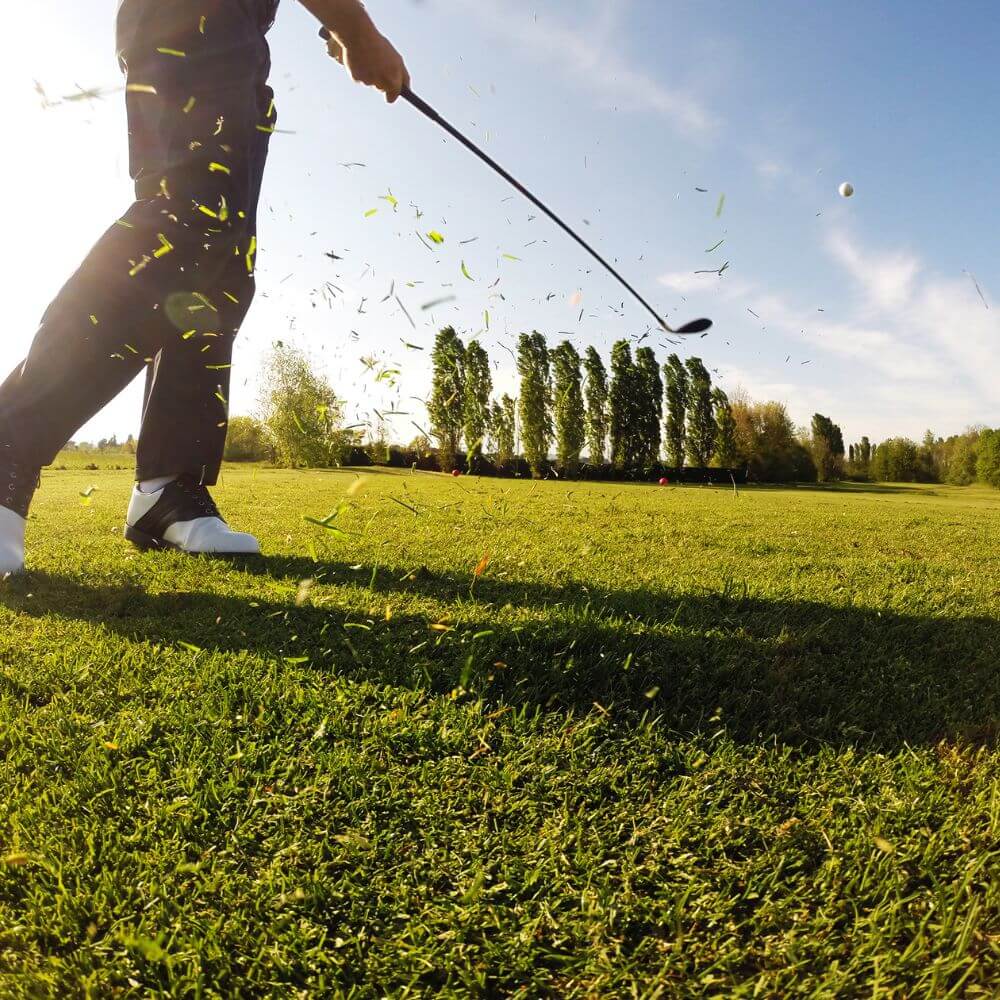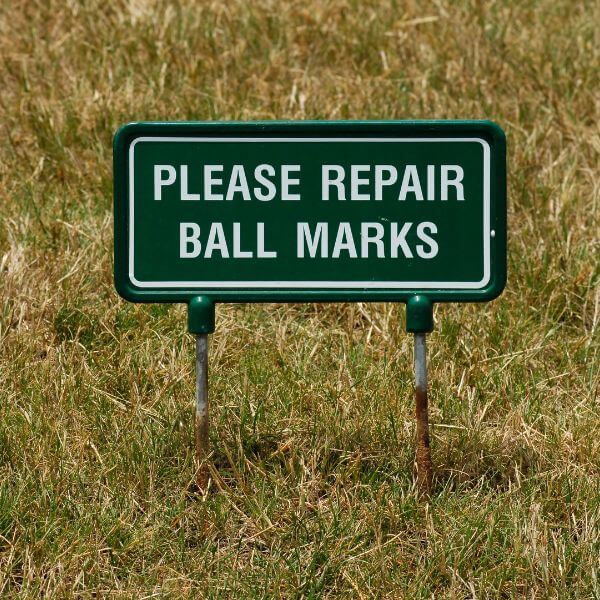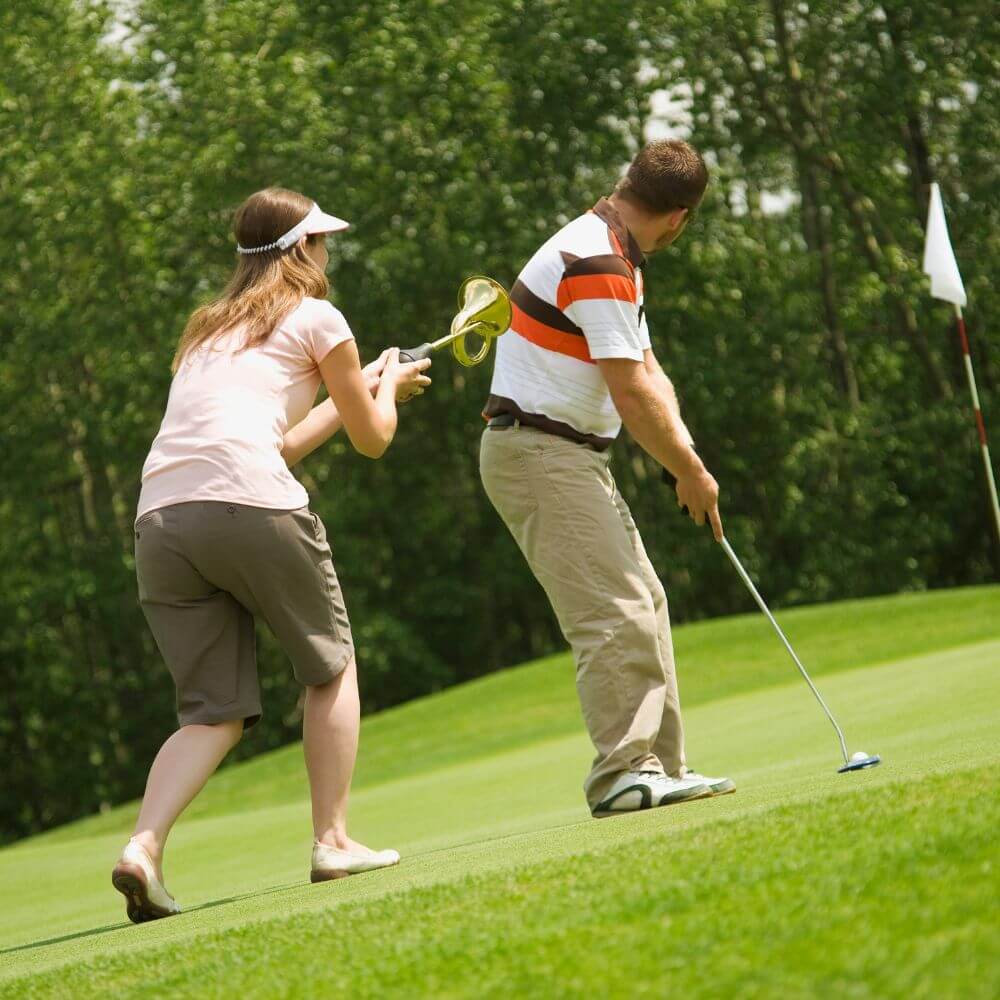Content Summary
Why the Rules of Golf Are Important
Golf is a sport of precision, strategy, and etiquette. Understanding the rules of golf is crucial for anyone looking to take up this sport. This guide aims to provide beginners with a comprehensive understanding of the basic rules of golf.
- Knowing the basic rules of golf provides golfers with a better experience out on the golf course and minimizes confusion for everyone playing.
- Not knowing the rules can cause delays and affect those in your group and those playing behind you.
- Knowing the rules also helps with the integrity of the game. Imagine if everyone just decided to make up their own rules and made decisions that were beneficial to their game and detrimental to others. All trust would be lost.
The Game
Golf is a game of skill, precision, strategy, and mental fortitude. At its most basic level, the objective of golf is to propel a small, dimpled ball into a series of holes that are scattered across a large, often beautifully landscaped course, and to do so using as few strokes as possible.
Each golf course is typically composed of 18 individual holes, although smaller 9-hole courses are also common. Each hole has its unique set of challenges, ranging from sand bunkers and water hazards to sloping greens and varying wind conditions.
These challenges, coupled with the sheer distance that needs to be covered, make golf a game where each stroke matters significantly, contributing to the total score.
The player who completes the entire course with the fewest number of strokes is declared the winner. This scoring system is what defines the competitive nature of golf. It encourages precision over power, strategy over recklessness, and consistency over isolated brilliance.
Playing golf involves not just physical skill, such as the ability to swing a club with accuracy and control, but also a significant amount of strategic thinking and decision-making.
The layout of the course, the position of the ball, the wind direction, the type of club chosen, and even the state of the turf can all dramatically influence the outcome of a shot. Golfers must constantly assess these factors, making strategic decisions about how to approach each shot.
Moreover, golf also demands considerable mental strength. Maintaining focus, managing nerves, and staying patient, particularly in high-pressure situations or after a poor shot, are vital to success. It's a game where calm and composed decision-making often triumphs over raw emotion.
Golf is a multifaceted sport that beautifully combines physical skill, strategic thinking, and mental toughness. The goal is simple, get the ball into the hole with as few strokes as possible, but the journey to achieving that goal is filled with numerous challenges and decisions, making golf an endlessly fascinating and rewarding game to play.

Equipment
Players are allowed to carry a maximum of 14 clubs in their bag. The choice of clubs can have a significant impact on a player's performance.
Different clubs are designed for different shots, such as drivers for long-distance shots and putters for short putts. Additionally, players must finish a hole with the ball they started it with, unless the ball is lost or damaged during play.
Only official golf balls are allowed to be used during golf tournaments or official rounds, and the ball must be marked with a unique identification mark to determine if a particular ball belongs to the player before that ball is hit.

Player Conduct
Our game of golf is a sport steeped in tradition and values that extend beyond just the rules of the game. The culture of golf emphasizes integrity, consideration, and respect, creating a unique atmosphere of sportsmanship and courtesy that enhances the overall experience of the sport for everyone.
A great example of this is the tradition of yelling "fore" as a warning when a wayward shot may potentially endanger other players on the course.
Players are expected to self-regulate, adhering to the rules without the need for constant monitoring or officiating. This includes not only the technical rules, such as playing the ball as it lies and counting each stroke accurately, but also the behavioral norms, like maintaining a steady pace of play and respecting the rights of fellow players.
Furthermore, players are expected to adhere to local rules and regulations set by individual golf courses. These may cover aspects like dress code, tee-time policies, and use of golf carts, and they contribute to the unique character and ambiance of each course.
Golf Etiquette
Golf is a sport that values etiquette, and players are expected to behave in a courteous and respectful manner. Respect for other players and the course is a fundamental part of golf.
This includes not disturbing other players' shots, not damaging the course, and adhering to the rules of the game. Replacing divots, repairing ball marks, and keeping pace with the players in front are all part of golf etiquette. Talking, shouting, or disturbing other players during their swing is strictly prohibited.

This can be as simple as remaining quiet and still while others are preparing or executing their shots, or as nuanced as ensuring your actions do not distract or disrupt play on adjacent holes.
Taking care of the course is another critical aspect of golf etiquette. Players are encouraged to leave the course in the same, if not better, condition than they found it.
Including repairing divots (chunks of turf displaced during a swing), raking sand bunkers after use, and fixing ball marks on the green. It's a practice that not only preserves the quality of the course for other players but also shows respect for the hard work of those who maintain the golf course.

Gameplay
At the beginning of each hole, players begin by teeing off from the designated tee box. In a normal round of golf the players choose the order of play in a random draw. The ball is placed on a tee or hit off the ground, (players choice), and the player must make a stroke to start the hole.
After the first tee shot the player with the lowest score from the previous hole tees off first. In a professional tournament the order of play is predetermined by the tournament management.
A round of golf typically consists of 18 holes, though smaller courses may have fewer. Players must place their ball within the teeing area for their first stroke on each hole. The order of play on a given hole is determined by the ball farthest from the hole.
Identifying Your Ball
Given the intricacies of the game and the potential for multiple balls to be in play at the same time, it's crucial for players to be able to identify their own ball quickly and easily. To facilitate this, the rules of golf recommend that players mark their balls before starting a round.

Marking your golf ball can be as simple as placing a dot or a line on the ball using a marker pen. Some players prefer more distinctive or personalized marks, such as initials, symbols, or unique patterns.
These identifying marks help players to recognize their ball instantly, preventing any confusion during the game. This is particularly important during official tournaments where balls can often end up close together on the fairway or green.
In addition to marking the ball with a pen, players might choose uniquely colored or patterned balls to distinguish their ball from others.
These can range from balls of a specific color, such as yellow or pink, to balls with distinctive patterns or prints. Some companies even offer custom printing services, allowing players to have balls printed with their name, a logo, or other unique designs.
This practice of marking golf balls not only aids in identification but also supports fair play. If two balls land close together, or if a ball is lost or ends up in a hazard, knowing which ball is yours helps maintain the integrity of the game.
Additionally, it aids in pace of play, reducing the time spent in identifying your ball, allowing more focus on planning your next stroke.
So, while it might seem like a small detail, marking your golf ball is an integral part of the preparation for a round of golf. It embodies the game's emphasis on precision, strategy, and respect for fair play.
Taking Turns
The game of golf is not just about precision and technique, but also about etiquette and strategy. Known as the "honor system" or "playing away."
One key rule that incorporates these elements is the order of play, which states that the player whose ball lies furthest from the hole plays first. This is applicable on every shot except the tee shot, where the order is determined by the score on the previous hole.
The purpose of this rule is twofold. Firstly, it's designed to maintain a steady and efficient pace of play. If players whose balls were closer to the hole were to play first, those who were farther away would need to wait.
By having the player farthest from the hole play first, the game can flow smoothly without unnecessary breaks or potential safety risks.
Secondly, the rule adds an interesting strategic element to the game. Being the first to play can have advantages or disadvantages depending on the situation.
For instance, a player who goes first gets to set the tone and potentially put pressure on their opponent with a well-executed shot.
However, going first also means that the player has less information about how the green is playing or how the wind is affecting the ball's flight, information that could be gleaned from watching an opponent's shot.
In the modern game of golf some players choose to play "ready golf". This is where a player can hit their ball (whether they are behind or in front) as soon as they are ready if other players are still deciding what to do. This has been found to speed up play and minimize wasted time on the golf course.
Ball Search
If a ball is lost during play, players have three minutes to search for it. If the ball is not found within this time, it is considered lost, and the player must take a penalty.
It's also permissible to declare a ball lost while standing at the location from which you made an unfavorable shot. Subsequently, the next ball you place at the same spot becomes the ball in play, with the addition of a one penalty stroke.

Play The Ball As It Lies
"Play the ball as it lies" is one of the fundamental rules of golf and is central to the game's philosophy.
According to this rule, golfers must play the ball from its resting place after each shot, without moving the ball or significantly altering its immediate environment to create a more favorable position.
Whether the ball has landed in the middle of the fairway, in deep rough, in a sand bunker, or even amongst tree roots, the player must take their next shot from that spot.
There are several reasons why this rule is so important in golf. Firstly, it upholds the spirit of fairness and integrity in the game.
Allowing players to move their ball or alter the surroundings would compromise the inherent challenge of the game and undermine its competitive nature.
Secondly, this rule introduces a significant strategic element to golf. Players must consider the potential landing areas for their ball before each shot, factoring in the risks and rewards associated with different parts of the course.
If a player misjudges a shot and their ball ends up in a difficult position, they have to deal with the consequences and plan their next shot accordingly.
There are, however, a few exceptions to this rule. For instance, a player is allowed to lift the ball to identify it, to see if it's damaged, or to remove loose impediments on the putting green. But such cases are exceptions and not the rule.
Furthermore, the "play the ball as it lies" rule is not just about where the ball has ended up, but also about not improving the lie of the ball.
Players are not allowed to press down or remove irregularities of surface (such as tufts of grass or divots) to provide a cleaner striking area for the ball.
Players are also not allowed to move or break anything growing or fixed (like branches or immovable obstructions) to improve the area of their intended stance or swing, the line of play, or the area in which they are to drop or place a ball.
In professional golf this rule is adhered to stringently but in amatuer golf not so much. I have witnessed players improve their lie whether on the fairway or in the rough.
Their reasoning is that public courses are not as pristine as private courses and so they have so much to overcome with each shot that it makes golf much more difficult and distracts from their fun.
Hazards in Golf
Hazards in golf are specific areas on a golf course that present additional challenges to players, often resulting in penalty strokes if a ball is hit into them.
They can dramatically affect the strategy and outcome of a hole, and learning how to navigate them is an essential part of becoming a proficient golfer.

There are two primary types of hazards in golf: water hazards and bunkers.
Water Hazards: These include lakes, ponds, rivers, streams, or any other body of water on the course. They are typically marked by yellow or red stakes or lines.
If a ball lands in a water hazard, players have several options, most of which involve a one-stroke penalty. They can play the ball as it lies without penalty, if possible, or they can play a new ball from the original spot where they played the shot into the hazard.
If the hazard is marked with red stakes or lines (indicating a lateral water hazard), they can also drop a new ball within two club lengths of the point where the original ball crossed the margin of the hazard, but not nearer to the hole.
Bunkers (or Sand Traps): These are shallow pits filled with sand. Bunkers can be located near the fairway or surrounding the green and are designed to test a player's ability to play a lofted shot.
Unlike water hazards, a player cannot ground their club in a bunker, meaning the player cannot touch the sand with their club before making their stroke.
If the ball is within the bunker, the player must hit the ball in such a way that it either lands outside of the bunker or goes into the hole.
Another term you might encounter is "penalty areas," which was introduced in 2019 by the USGA and R&A as part of a rules modernization initiative.
This new terminology expanded the traditional concept of "water hazards" to include areas such as deserts, jungles, lava rock fields, or other areas that the course wishes to mark as a penalty area.
Scoring
There are two main scoring methods in golf: stroke play and match play. In stroke play, the player with the fewest total strokes at the end of the round wins.
In match play, the player who wins the most holes is the winner. There are also penalties for certain actions, such as hitting the ball out of bounds or taking an illegal drop.
Rules: Dropping and marking balls not on the green
If a player's ball ends up in a penalty area or becomes unplayable, they may drop a ball outside the area. The ball must be dropped from knee height and come to rest within two club-lengths of where it was dropped.
Rules: On the greens
When a ball is on the green, players may mark their ball and pick it up to clean it. Players must not touch their line of putt, and the flagstick can be left in or taken out when putting.
Putting is the final stage of each hole, where a player uses a putter to hit the ball into the hole. You should take your time and carefully line up your shot making sure to check for any bumps, unevenness or elevation changes on the green.
Rules: Talking to other players
During a round, players can only ask for advice from their caddy or partner. Players are not allowed to give advice to other players unless they are partners.
Rules: Ball moves by accident or by God
If a ball is moved by natural forces such as wind or water, or if it is moved accidentally, the ball must be played from its new location.
Rules: Obstructions
Players are allowed to move loose natural objects such as leaves and twigs, but they cannot move fixed obstructions such as benches or signage.
Rules: Ball in the water, lost, out of bounds or unplayable
If a ball is lost, out of bounds, or unplayable, the player must take a penalty stroke and play a ball as nearly as possible at the spot from which the original ball was last played.
Common Golf Terms
Understanding common golf terms such as "birdie", "bogey", "par", and "eagle" can help beginners better understand the game and communicate with other players.
Par: The term "par" is perhaps one of the most fundamental in golf. It refers to the predetermined number of strokes that an expert golfer is expected to take to get the ball from the tee into the hole.
An 18-hole golf course usually has a total par between 70 and 72. When a player completes a hole in the designated par, they're said to have made "par" on that hole.
Birdie: A "birdie" is a score that is one stroke under par for a given hole. For example, if a player completes a par-4 hole in three strokes, they've made a birdie.
Achieving a birdie is a notable accomplishment as it indicates that a player has performed better than the expected standard on that hole.
Eagle: An "eagle" is even rarer and more celebrated than a birdie. It occurs when a player completes a hole two strokes under par. For instance, if a golfer completes a par-5 hole in just three strokes, they've scored an eagle.
This term often comes into play on par-5 holes, but it can also apply to par-3 holes if a player manages to hole their tee shot – a feat known as a "hole in one" or "ace."
Bogey: A "bogey" is a score that is one stroke over par for a hole. If a player takes five strokes to complete a par-4 hole, for example, they've made a bogey.
While not as celebrated as a birdie or eagle, it's a common occurrence for many golfers, particularly those just starting to learn the game.
FAQs: Rules of Golf
What are the official rules of golf?
The Official Rules of Golf are maintained by the United States Golf Association (USGA) and the Royal and Ancient Golf Club (R&A). These are the universal rules that all golfers adhere to when playing.
What is considered a stroke in golf?
In golf, each time a player hits the ball with the intention of advancing it towards the hole, it is considered a stroke. This includes the initial tee shot as well as any shots made on the fairway, rough or putting green.
What is an unplayable lie?
An unplayable lie occurs when a player's ball is in a position where it is impossible or extremely difficult to make a stroke. In such cases, the player can declare the ball unplayable and take one of three relief options, each with a penalty stroke.
What is a provisional ball?
A provisional ball is a ball hit by a player when they suspect the original ball might be lost outside of a penalty area or out of bounds. The player is allowed to hit a provisional ball before searching for the original ball, with the score counting for the provisional ball if the original ball is not found.
What is a penalty stroke?
A penalty stroke is a stroke added to a player's score as a result of violating a rule. Penalty strokes can be incurred for things like hitting the ball out of bounds, hitting into a penalty area, taking an unplayable lie or hitting the wrong ball.
The Three Main Penalty Levels Are:
- One-Stroke Penalty
- General Penalty
- Disqualification
You can read more about the most common penalties here.
What is a penalty area?
A penalty area is an area on the course marked by yellow or red stakes or lines. This could include areas like water hazards or areas of very tall grass. If a player's ball lands in a penalty area, they can take relief but will incur a penalty stroke.
What are local rules in golf?
Local rules are additional rules that a golf course may enforce or alter to address unique situations. These rules are often specific to that course and can affect things like boundary lines, out of bounds rules, and even the maximum number of clubs allowed in a player's bag.
Bonus Question - What is match play in golf?
Match play is a scoring system in golf where each hole is played as a separate contest, with the player who completes the hole in the fewest strokes winning that contest.
The player who wins the most contests or holes over the course of the round wins the match. Each hole is worth one point and a match typically lasts for 18 holes.
In match play, players can concede a hole or the entire match at any point, resulting in a win for the opponent. The format is often used in team competitions such as the Ryder Cup, where players play against each other in head-to-head matches.
Final Thoughts
While the rules of golf can seem complex at first, understanding them can greatly enhance your enjoyment of the game. Remember, the most important rule in golf is to have fun!







